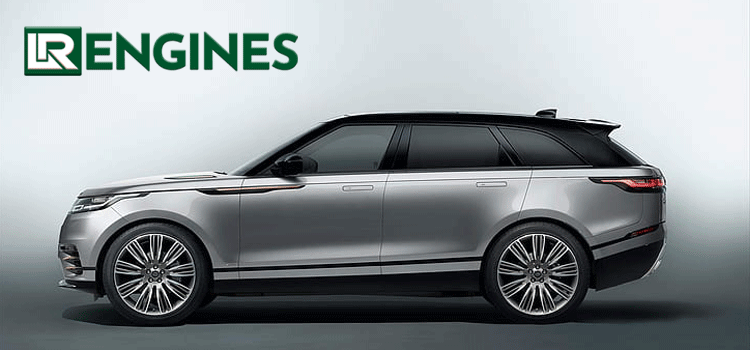How Does The Range Rover 2.0 Engine Integrate With The Vehicle’s Electronics?

The Range Rover 2.0 engine is renowned for its robust performance and advanced engineering. However, its excellence goes beyond the mechanical realm. The integration of this engine with the vehicle’s electronic systems is a testament to modern automotive innovation. We explores the sophisticated interplay between the Range Rover 2.0 engines and the vehicle’s electronics, shedding light on how this synergy enhances performance, safety, and user experience.
Advanced Engine Control Unit (ECU)
The Engine Control Unit (ECU) is the brain behind the Range Rover 2.0 engine’s operations. This sophisticated computer manages various engine functions, including fuel injection, ignition timing, and air-fuel ratio. By continuously monitoring and adjusting these parameters, the ECU ensures optimal engine performance and efficiency. Moreover, the ECU communicates with other electronic systems in the vehicle, such as the transmission control unit, to synchronize operations and enhance drivability. The seamless integration of the ECU with the vehicle’s electronics is crucial for achieving the desired balance between power and efficiency.
Real-Time Diagnostics and Monitoring
The integration of the Range Rover 2.0 engine with the vehicle’s electronics allows for real-time diagnostics and monitoring. Advanced sensors placed throughout the engine and other critical components constantly relay data to the ECU and other control modules. This data is used to monitor the health and performance of the engine, identifying any issues before they become serious problems. For instance, sensors can detect anomalies in temperature, pressure, or emissions, prompting the ECU to take corrective action or alert the driver via the dashboard. This proactive approach helps in maintaining the engine’s longevity and reliability.
Enhanced Fuel Efficiency
The integration of the Range Rover 2.0 engine with electronic systems significantly enhances fuel efficiency. The ECU plays a vital role in this aspect by precisely controlling the fuel injection process. It adjusts the amount of fuel injected into the engine based on various factors such as engine load, speed, and temperature. Additionally, the ECU works in tandem with the vehicle’s stop-start system, automatically shutting down the engine when the vehicle is stationary and restarting it when the accelerator is pressed. This intelligent fuel management system reduces fuel consumption and emissions, contributing to a more eco-friendly driving experience.
Optimized Performance
Performance optimization is another key benefit of the integration between the Range Rover 2.0 engine and vehicle electronics. The ECU continuously adjusts various engine parameters to ensure peak performance under different driving conditions. For instance, during acceleration, the ECU increases the fuel supply and adjusts the ignition timing to deliver maximum power. Conversely, during cruising or deceleration, it reduces fuel consumption to enhance efficiency. This dynamic adjustment capability ensures that the engine performs optimally at all times, providing a smooth and responsive driving experience.
Advanced Safety Features
The integration of the Range Rover engine with vehicle electronics enhances safety features. The ECU interacts with various safety systems such as the Anti-lock Braking System (ABS), Electronic Stability Control (ESC), and traction control. For example, if the ECU detects a loss of traction, it can reduce engine power to prevent wheel spin and maintain vehicle stability. Additionally, the ECU can work with the adaptive cruise control system to automatically adjust the vehicle’s speed based on traffic conditions. These advanced safety features help in preventing accidents and ensuring a safer driving experience.
Seamless Infotainment Integration
The Range Rover 2.0 engine’s integration with the vehicle’s electronics extends to the infotainment system as well. Modern Range Rovers are equipped with advanced infotainment systems that offer a wide range of features such as navigation, entertainment, and connectivity. The ECU communicates with the infotainment system to provide real-time data such as fuel efficiency, engine performance, and maintenance alerts. Additionally, the infotainment system can display this information in an easy-to-understand format, allowing drivers to stay informed and make better decisions while driving.
Intelligent Drive Modes
The integration of the Range Rover 2.0 engine with vehicle electronics enables intelligent drive modes. These drive modes, such as Eco, Comfort, and Sport, allow drivers to customize the vehicle’s performance based on their preferences and driving conditions. The ECU adjusts various engine and transmission parameters to optimize performance for each drive mode. For example, in Eco mode, the ECU focuses on maximizing fuel efficiency, while in Sport mode, it prioritizes performance and responsiveness. This flexibility enhances the driving experience by allowing drivers to tailor the vehicle’s performance to their needs.
Predictive Maintenance
Predictive maintenance is a significant advantage of the Range Rover 2.0 engine’s integration with vehicle electronics. The ECU and other electronic control modules continuously monitor the engine’s health and performance, identifying potential issues before they become serious problems. For instance, sensors can detect wear and tear on critical components such as the timing belt or spark plugs, prompting the ECU to alert the driver about the need for maintenance. This proactive approach helps in preventing unexpected breakdowns and costly repairs, ensuring that the engine remains in top condition.
Conclusion
The integration of the Range Rover 2.0 engine with the vehicle’s electronics represents a significant advancement in automotive technology. This seamless interplay enhances various aspects of the driving experience, from performance and efficiency to safety and convenience. By leveraging advanced electronic systems, the Range Rover 2.0 engine delivers a driving experience that is not only powerful and efficient but also safe and enjoyable. As automotive technology continues to evolve, the integration between engines and electronics will play an increasingly important role in shaping the future of driving.


